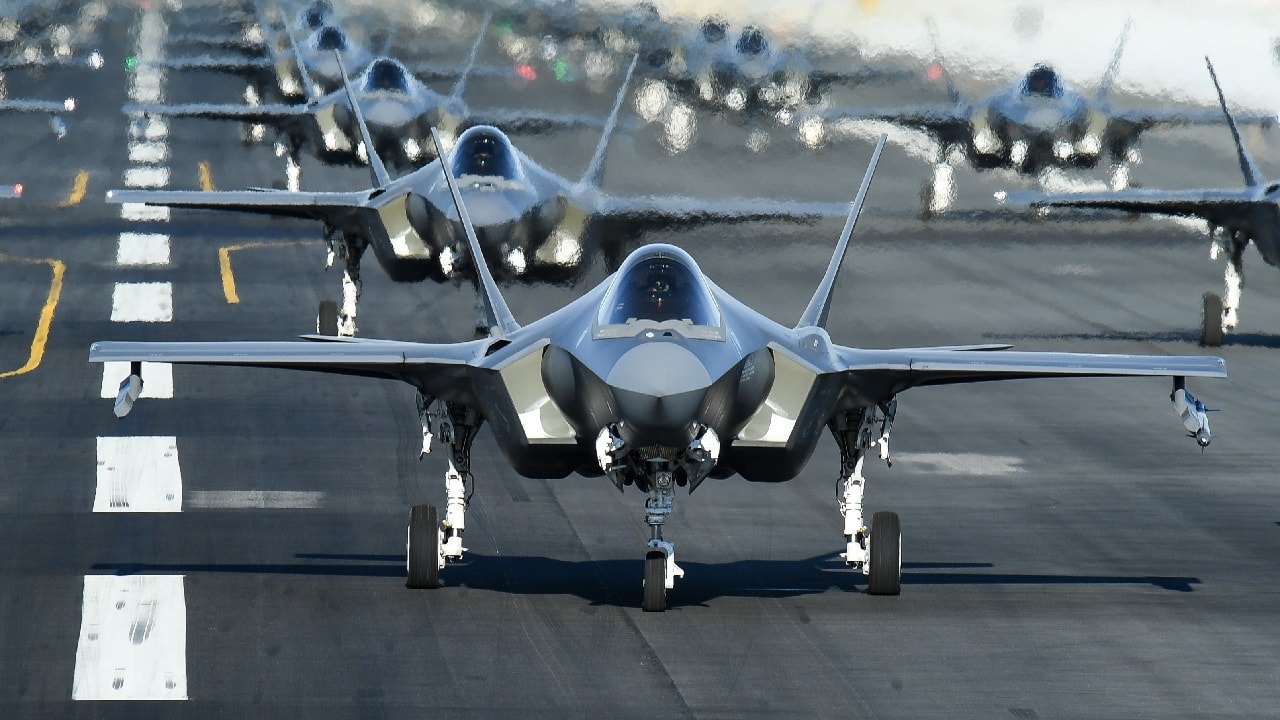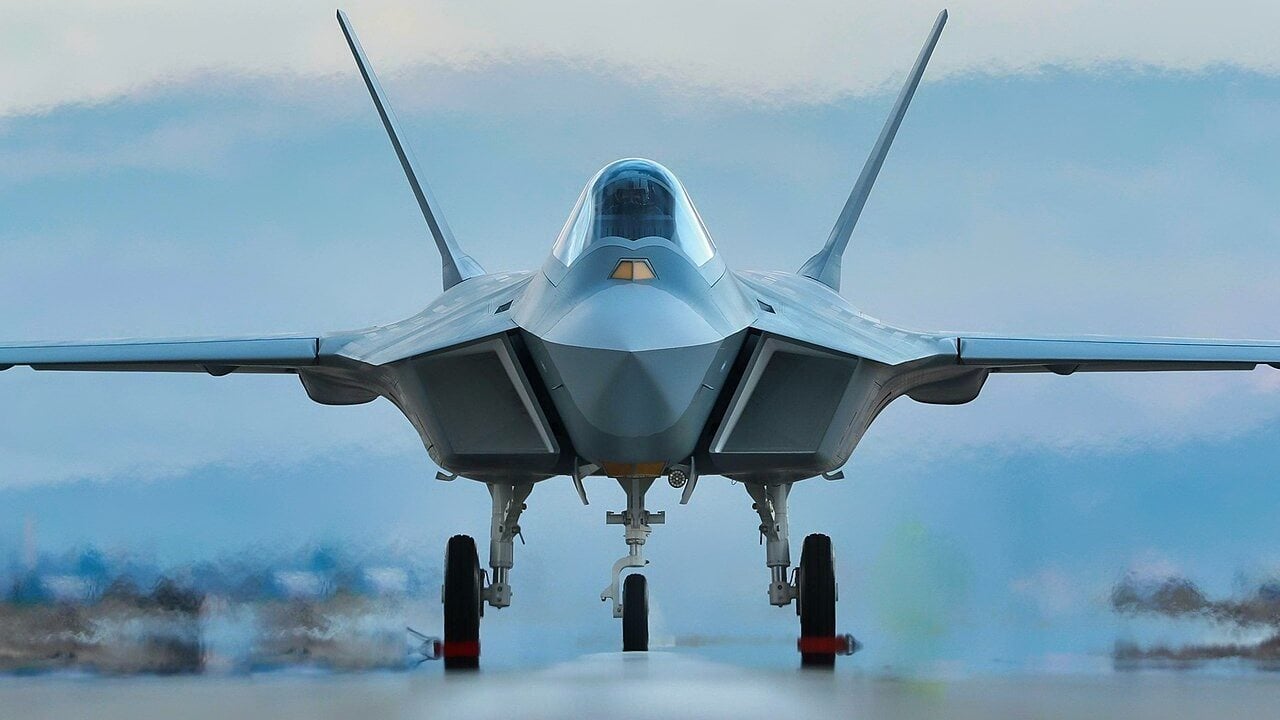Key Points and Summary: Turkey’s Kaan stealth fighter is a bold step toward military self-sufficiency, designed to rival Western fifth-generation jets.
-Developed by Turkish Aerospace Industries, Kaan features advanced avionics, stealth technology, and sensor fusion akin to the F-35 and F-22.
-With a projected cost of $100 million, it targets nations restricted from U.S. arms sales, including Pakistan and Azerbaijan.
-While not yet an F-35 competitor, Kaan could disrupt the global market, especially in the Gulf and Asia.
-Its success hinges on proving operational effectiveness and securing large-scale orders. If it delivers, Kaan may redefine Turkey’s role in high-end defense exports.
Can Turkey’s Stealth Fighter Kaan rule export markets?
A lot rides on Turkey’s national fighter plane (MMU), nicknamed Kaan (meaning “master” or “ruler” in Turkic languages). Turkish Aerospace Industries (TAI) is developing MMU Kaan to resemble the F-22 in air-to-air combat and the F-35 in stealth, sensor fusion, and electronic warfare.
Often called “Turkey’s war of independence in aviation,” Kaan’s mass production will shield Ankara from U.S. sanctions. The Turkish Air Force plans to acquire 100 units, with more for export. Success would establish Turkey as a major player in fifth-generation stealth fighter jets along with lead exporter of combat drones.
Originally designated “Turkish Fighter Experimental” (TF-X), Kaan was meant to complement Turkey’s planned F-35 fleet (100-120 units). Turkish companies also produced 900 parts for the F-35, but after Turkey’s 2020 expulsion from the program due to its Russian S-400 purchase, Kaan took on the F-35’s role.
Kaan maiden flight took place on Feb. 21, 2024, followed by another in May. Two new prototypes will begin testing this year, with five more by 2027. Serial production will start in 2028 using U.S.-made GE F110 turbofan engines. By the mid-2030s, an indigenous engine will make Kaan a fully stealth aircraft, placing Turkey among an elite group of fifth-generation fighter producers alongside the U.S., Russia, and China.
What Will Kaan Do?
MMU Kaan will carry a national mission computer, and Turkish-made weapons while incorporating the advanced capabilities of the F-22 and the F-35:
-360° situational awareness,
-Active electronically scanned array (AESA) radar,
-Infrared search & track (IRST) and electro-optical targeting system (EOTS),
-Helmet-mounted display (HMD),
-Sensor fusion and advanced data link with friendly forces,
-Very low radar cross-section,
-Electronic warfare suite,
-Super-cruise and super-maneuverability.
Not clear Kaan will have 2D thrust vectoring like the F-22.
Can You Put a Price on Independence?
Kaan’s unit cost is not unknown. Former TAI CEO Temel Kotil floated a price tag of $100 million per plane in 2021 but later hinted at a higher figure. Costs will depend on the total number of orders, production scale, and foreign investment.
Another key cost factor is the “Murad” AESA radars, developed by Turkish military electronics giant ASELSAN. According to Brig. Gen. Huseyin Fazla, retired Turkish Air Force pilot and former TAI vice president and test pilot, Murad needs 1,500 flying hours before mass production. Full-scale integration and testing of the aircraft will take thousands of more hours.
As long as Kaan’s cost remains comparable to the F-35 ($80-$110 million) and the Turkish-made engines last several thousand flight hours, affordability will not be the main concern — national defense autonomy trumps all concerns.

F-35 fighter.
Kaan: Who Will Buy It?
Two sure buyers are Turkish allies Azerbaijan and Pakistan, both restricted from purchasing U.S. arms, while Qatar, Saudi Arabia, and the United Arab Emirates are potential customers. TAI has already established a subsidiary firm in Azerbaijan to produce parts for Kaan.
Gulf Arab states’ interest will depend on their ability to purchase F-35s and their relations with Turkey. Qatar is a strong candidate, while Saudi Arabia has shown serious interest. The UAE tried to acquire the F-35 in 2021. Still, it suspended the talks with the United States over the latter’s concerns about Israel’s qualitative military edge (Israel is the only operator of the F-35 in the Middle East).
If Kaan proves its worth, the Emiratis, who are already involved in joint defense schemes with the Turks, are likely to become a customer.
Rival to the F-35?
Not right away. The F-35 has already sold more than 1,000 units, and despite naysayers, it is a capable platform.
Nonetheless, Kaan will be competing against the F-35 in two ways:
Operationally, Turkey’s NATO “frenemy” Greece will receive F-35s in the late 2020s and early 2030s, so Kaan must match the JSF in the Aegean and the eastern Mediterranean.

A U.S. Air Force F-35A Lightning II, assigned to the 495th Fighter Squadron from Royal Air Force Lakenheath, England, lands for the first time at Souda Air Base, Greece, July 7, 2022. The fifth-generation aircraft will be participating in exercise Poseidon’s Rage, in an effort to bolster U.S.-Hellenic readiness and interoperability. (U.S. Air Force Photo By Tech. Sgt. Rachel Maxwell)
Commercially, if Kaan makes a good name in Azerbaijan, Pakistan, and the Gulf countries, Turkey could leverage that success in other countries that are unable or unwilling to purchase U.S. systems. Recent buyers of Turkish defense platforms — Bangladesh, Indonesia, Malaysia, and the Philippines — may also consider Kaan.
Kaan is not yet an F-35 rival, but it could become a viable alternative for countries looking beyond U.S. systems.
About the Author: Barın Kayaoğlu
Barın Kayaoğlu is an independent analyst and consultant based in Ankara, Türkiye. The opinions expressed in his work and public comments are personal and not shared by his clients and business partners. With a Ph.D. in history on U.S. foreign relations and the modern Middle East at The University of Virginia, Kayaoğlu is currently working on his book (based on his doctoral dissertation), “The Global Cold War in Turkey and Iran: U.S. Diplomacy, Authoritarian Development, and Anti-Americanism.” He most recently published the article “Turkey-United States Relations” for the Oxford Research Encyclopedia of American History. You can follow him on www.barinkayaoglu.com, X (Twitter), LinkedIn, YouTube, and Facebook.

